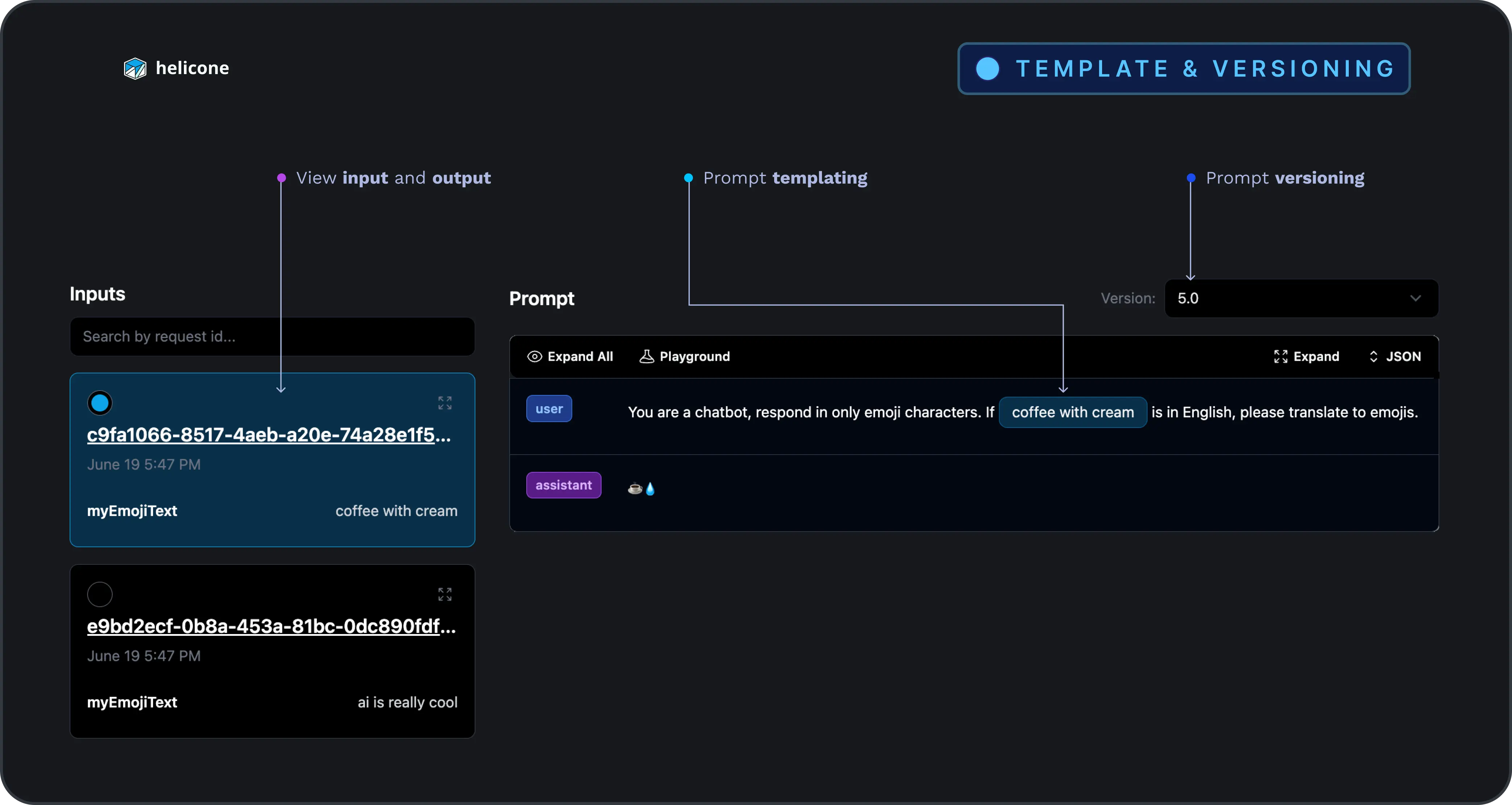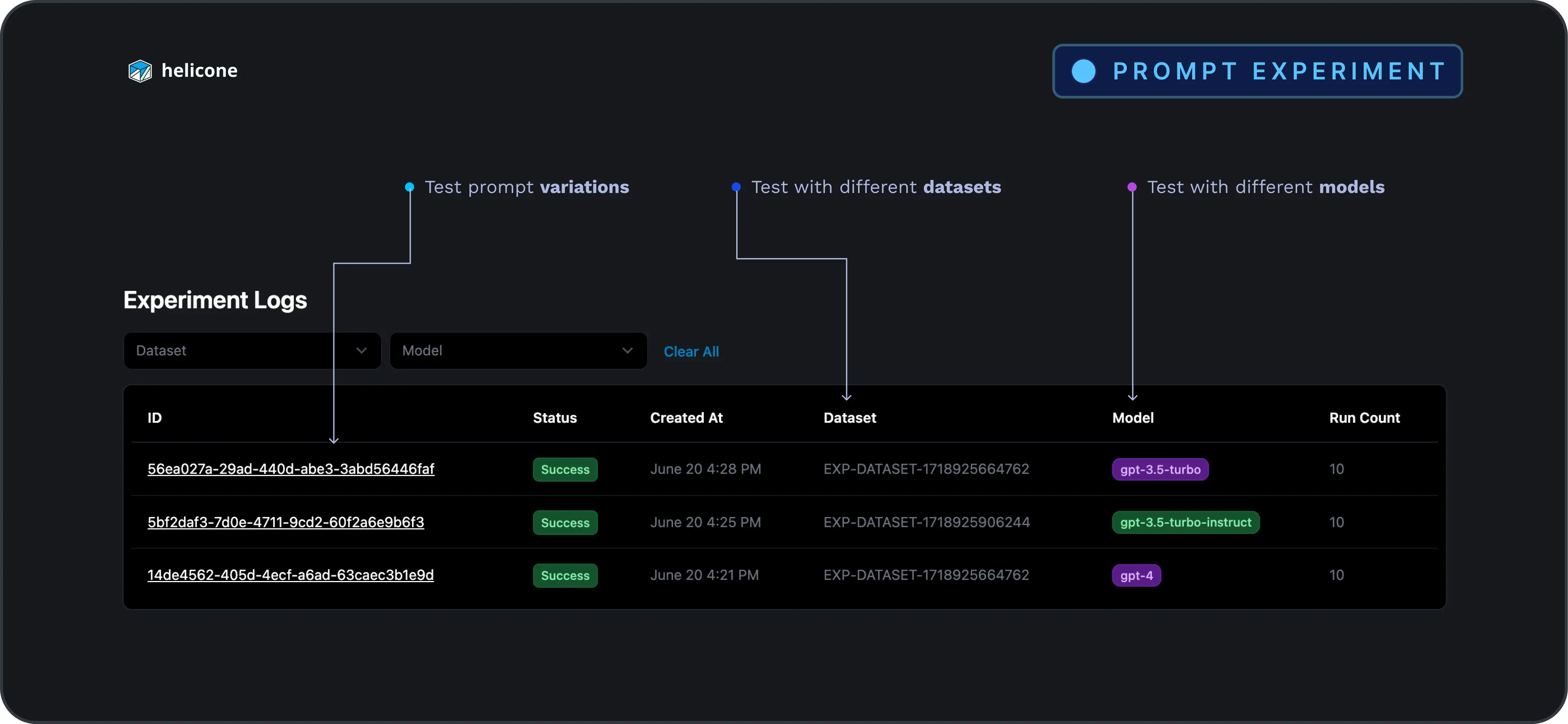What is Prompt Management?
As prompts become more complex, developers are looking for a better way to track, compare versions, and test them efficiently before production.

But it’s not just developers who are managing prompts—non-technical people are also becoming key partners in prompt design.
- What if you could iterate faster and independently of the code?
- Collaborate with non-software engineers?
- Revert to previous versions easily?
- Retain ownership of your prompts?
In this blog, we will dive into the challenges of managing prompts and what to look for in prompt management tool.
What is a Prompt?
Large Language Models (LLMs) can be taught to perform new tasks using in-context learning, which involves feeding a prompt with instructions and/or examples. This method allows LLMs to perform tasks without needing additional training or parameter updates.
Prompt engineering is crucial for optimizing the model outputs. Anyone working with AI products can be involved in crafting prompts using various techniques — both developers and non-technical users.
What is Prompt Management?
At its core, prompt management for production-level LLMs involves setting up a streamlined system to manage and optimize prompts. This includes:
- Version control: Keeping track of different prompt variations.
- Decoupling prompts from the codebase: Being able to test and iterate on prompts without delving into your application’s core code.
- Traceability: Making sure prompts are easily traceable for testing and optimization.
 View input/output, manage prompt versions and templates in Helicone.
View input/output, manage prompt versions and templates in Helicone.
What are the challenges with managing prompts?
1. Overwhelming number of prompts
For customer service chatbot, developers often create several versions of a prompt to handle refund requests. Each version uses different phrasing to test which one generates the most accurate and helpful response.
Problem
But as the product/company scales, managing multiple versions can quickly become overwhelming without proper version control.
2. Iteration without code changes
A team working on an AI personal assistant wants to improve its scheduling capabilities, but changing the code every time is tedious.
Problem
Teams need to test and refine prompts quickly without changing production code.
 Helicone lets you tweak prompts, models, or datasets without delving into the codebase. You can also directly compare the metrics with production prompt.
Helicone lets you tweak prompts, models, or datasets without delving into the codebase. You can also directly compare the metrics with production prompt.
3. Collaboration with non-technical teams
A marketing team with content writers and SEO specialists might collaborate on prompts for an AI blog post generator. While the content writers focus on tone and style, the SEO specialists adjust prompts to optimize for search engine rankings.
Problem
An effective tool enable collaboration between the technical and creative roles, allowing them to tweak prompts without delving into code. The good news is, Helicone is user-friendly for both technical and non-technical teams!
What to look for in a prompt management tool?
If your team is building LLM apps, consider choosing a prompt management tool that:
- Focuses on prompts: allowing you to track, edit, and test prompts easily.
- Is secure: allowing you to safely store and distribute your model API key.
- Is collaborative: empowering both technical and non-technical teams in prompt design.
Tools like Helicone, Pezzo and Agenta are popular choices for managing prompts.
Bottom Line
While many prompt management tools provide awesome features, they often come with limitations, such as losing access to your prompts when services go down.
That’s why Helicone was designed to provide full prompt ownership and the easiest implementation with a 1-line integration. For more details, check out Helicone’s docs on Prompt Management.